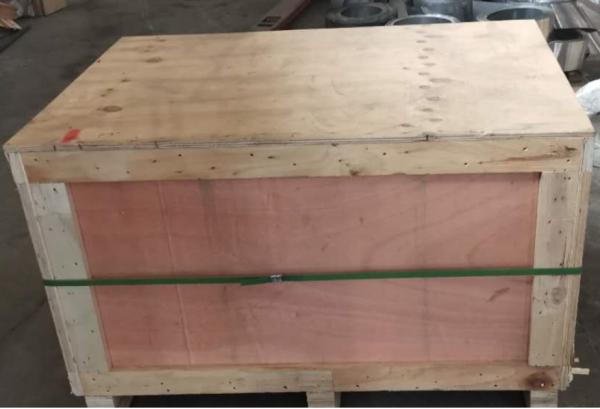| Sign In | Join Free | My isp.org.cn |
|
- Home
- Products
- About Us
- Quality Control
- Contact Us
- Get Quotations
| Sign In | Join Free | My isp.org.cn |
|
Brand Name : Tankii
Model Number : K
Certification : ISO9001
Place of Origin : China
MOQ : 5~10kg as per diameter
Price : USD24~60/kg
Payment Terms : T/T, Paypal, Western Union, MoneyGram,
Supply Ability : 2000 Ton per year
Delivery Time : 5-7 days
Packaging Details : ON spool and carton package. As the order quantity and customer requirement.
Item : TANKII Thick Wire 2.0mm 3.2mm 6.0mm 8.0mm Thermocouple Wire /Rod /Bar Chromel And Alumel With Oxidized Surface Used For Laboratory High-Temperature Reaction Device
Package : in coil or by length
Material : NiCr90/10- Ni97Al3
Surface : bright or oxidized as per request
Diameter available : 0.05mm-12mm can be produced
MOQ : 5~10kg as per sizes
Payment : TT, Paypal, western union,
Lead time : 5~20 days
K-type thermocouple wire is a temperature sensor composed of two different metal alloys, and its definition and core characteristics are as follows:
1. Definition
K-type thermocouple wire is the abbreviation for nickel chromium nickel aluminum (NiCr NiAl) thermocouple, which belongs to a type of base metal thermocouple. It generates thermoelectric potential through the Seebeck Effect of two different metals to measure temperature.
2. Composition
Positive electrode (KP): Nickel chromium alloy (NiCr), typically containing 90% nickel and 10% chromium.
Negative electrode (KN): Nickel aluminum alloy (NiAl), typically containing 95% nickel, 2% aluminum, 2% manganese, and 1% silicon.
3. Working principle
When the two ends of a K-type thermocouple wire are at different temperatures, a thermoelectric potential (EMF) is generated in a closed loop due to the difference in electron density between the two metals. By measuring the magnitude of the thermoelectric potential, the temperature value can be calculated.
What differentiates one thermocouple from another is the metals in its two wires: the positive leg and the negative leg. Because each thermocouple type has a different pairing, they differ in temperature limits, process conditions (inert, oxidizing, reducing atmospheres, heavy vibration), and so on.
Conductor Name |
Thermocouple Type | Grade |
Temperature range ℃ | Allowable Tolerance /℃ |
| PtRh30-PtRh6 | B | Ⅱ | 600~1700 | ±0.25% t |
| Ⅲ | 600~800 | ±4 | ||
| 800~1700 | ±0.5%t | |||
| PtRh13-Pt | R | Ⅰ | 0~1100 | ±1 |
| 1100~1600 | ±[1+(t-1100) ×0.3%] | |||
| Ⅱ | 0~600 | ±1.5 | ||
| 600~1600 | ±0.25% t | |||
| PtRh10-Pt | S |
Ⅰ | 0~1100 | ±1 |
| 1100~1600 | ±[1+(t-1100) ×0.3%] | |||
Ⅱ | 0~600 | ±1.5 | ||
| 600~1600 | ±0.25% t | |||
| NiCr-Ni | K | Ⅰ | -40~1100 | ±1.5℃ or ±0.4%t |
| Ⅱ | -40~1300 | ±2.5℃ or ±0.75%t | ||
| Ⅲ | -200~40 | ±2.5℃ or ±1.5%t | ||
| NiCrSi-NiSi | N | Ⅰ | -40~1100 | ±1.5℃ or ±0.4%t |
| Ⅱ | -40~1300 | ±2.5℃ or ±0.75%t | ||
| Ⅲ | -200~40 | ±2.5℃ or ±1.5%t | ||
| NiCr-CuNi (Constantan) | E | Ⅰ | -40~1100 | ±1.5℃ or ±0.4%t |
| Ⅱ | -40~1300 | ±2.5℃ or ±0.75%t | ||
| Ⅲ | -200~40 | ±2.5℃ or ±1.5%t | ||
| Fe-CuNi (Constantan) | J | Ⅰ | -40~750 | ±1.5℃ or ±0.4%t |
| Ⅱ | -40~750 | ±2.5℃ or ±0.75%t | ||
| Cu-CuNi (Constantan) | T | Ⅰ | -40~350 | ±0.5℃ or ±0.4%t |
| Ⅱ | -40~350 | ±1.0℃ or ±0.75%t | ||
| Ⅲ | -200~40 | ±1.0℃ or ±1.5%t |




|
|
TANKII Thick Wire 2.0mm 3.2mm 6.0mm 8.0mm Thermocouple Wire / Rod / Bar Chromel And Alumel With Oxidized Surface For Laboratory High-Temperature Images |